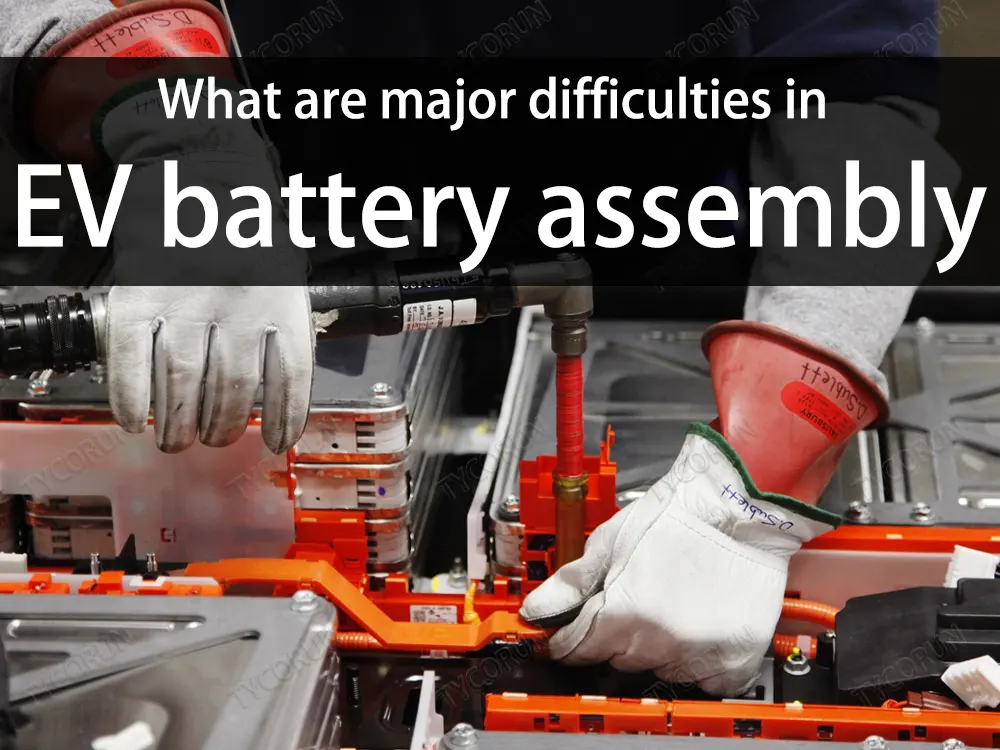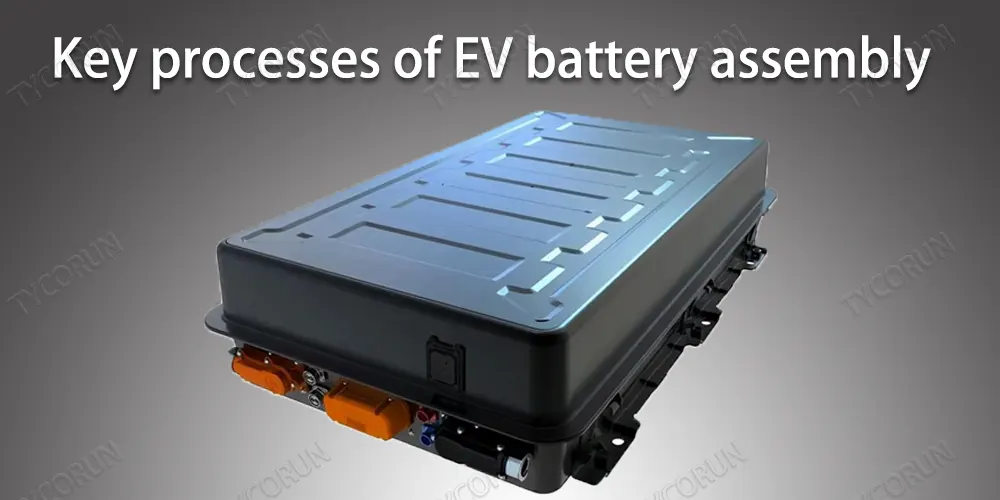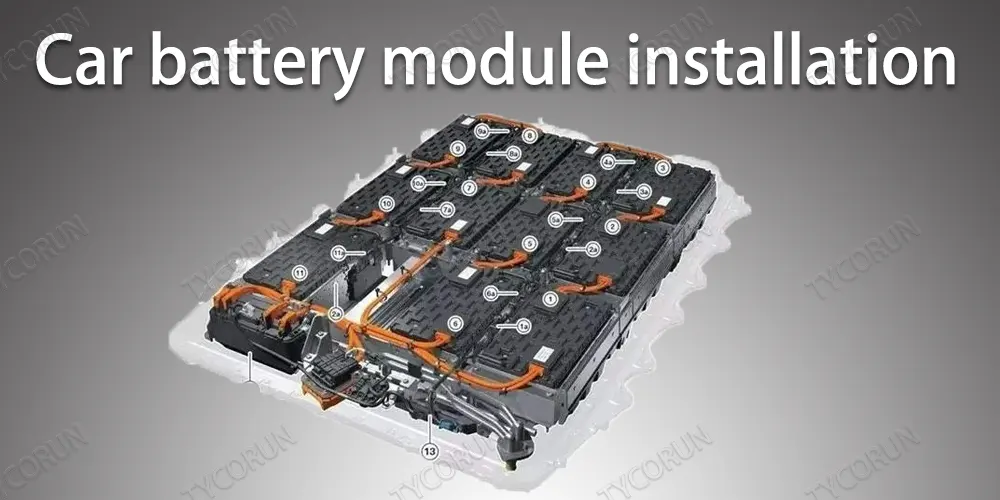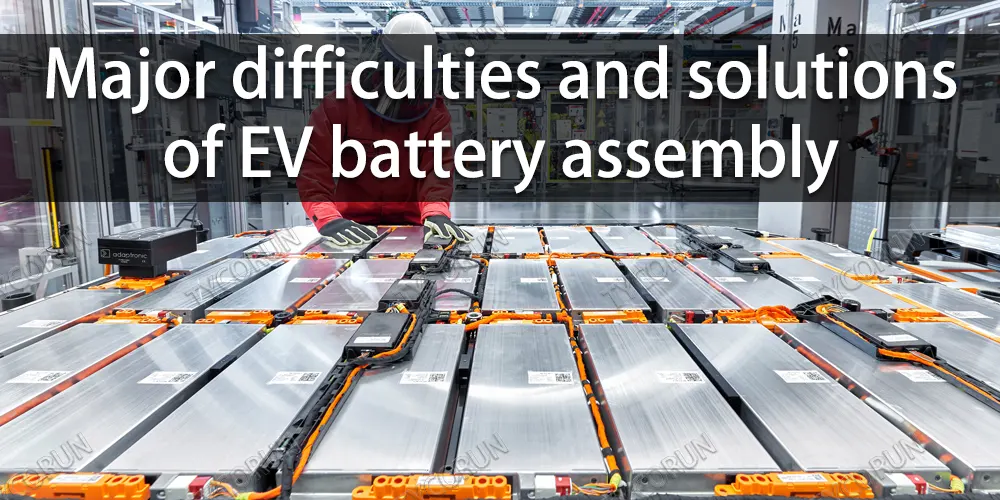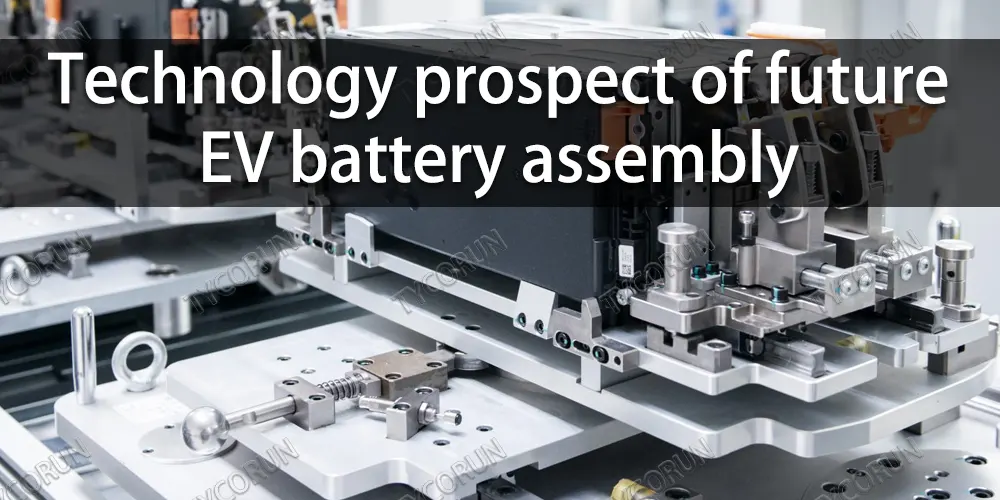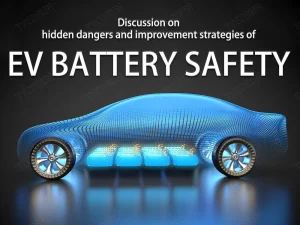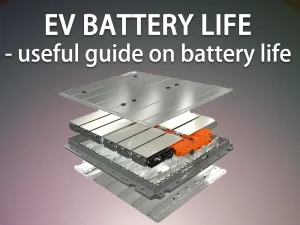What are major difficulties in EV battery assembly

Therefore, the issue of EV battery assembly has also become the focus of the assembly process of electric vehicles.
This article starts from the perspective of EV battery assembly to see what difficulties EV battery assembly has.
Key processes of EV battery assembly
The power battery system is a complex system, which consists of BMS battery management system, multiple battery modules, housing and other components.
The battery pack is composed of multiple modules, and each module is composed of multiple batteries connected in series and parallel.
EV battery pack assembly is mainly to arrange and fasten multiple modules, and to test the junction box.
During the assembly process, many stations are involved in safe connections, and these EV battery assembly processes are directly related to the safety of the vehicle and passengers. The key EV battery assembly process is as follows:
High and low voltage connector assembly
There are many high and low voltage connectors on the battery pack and BMS. The assembly features of these interfaces include:
● Security parts need to collect data feedback, and sensor tools must be used;
● When tightening, it is usually a hand-held tool and a hand-held tool. It is best to use a gun-type tool for easy grip and tightening;
● The torque range is not wide, so it is best to choose a compact tool.
Installation of high voltage wiring harness
There are total positive and negative high-voltage wiring harnesses in the battery pack that need to be connected and assembled. When the module is charged and powered, the voltage connected to this part is as high as hundreds of volts.
Usually the ground of the station will be insulated to protect the station from high voltage battery. In addition, insulation treatment is also required on the EV battery assembly.
The insulation treatment of this part of the station not only affects the safety of the battery, but also affects the safety of the operator.
Connection and installation of high-voltage copper bars
The high-voltage copper bar is used to connect the conduction between the modules, the current is large and the use is intensive, and the assembly is complicated.
As the key structure of the battery conduction, the safety of the EV battery assembly is also very important, and the negligence of the car battery assembly is likely to cause a short circuit of the battery.
Car battery module installation
The battery pack is composed of multiple battery modules. The EV battery pack assembly requires moderate tightness, and each structural component has sufficient strength to prevent deformation or damage due to external forces inside the battery.
The battery module is composed of multiple power cells connected in series and parallel.
The EV battery pack assembly needs to fix the battery module in the aluminum box. Generally, long bolts are used to pass through the module and fixed to the nuts at the bottom of the box.
There are also battery packs in the form of double-layer modules to save space, and there will be module mounting brackets for fixing the upper module.
Top cover installation
In order to meet the needs of light weight and high efficiency, battery packs usually use aluminum casings.
Dozens of bolts are used to connect and assemble the upper cover and the lower box of the battery pack aluminum case.
The bolts are numerous and distributed regularly, and the tightening direction is vertical downward.
It is necessary to tighten sequentially during assembly to ensure that the tightening stress of the upper cover is evenly distributed.
Major difficulties and solutions of EV battery assembly
From the key assembly processes of the above five power batteries, we can understand that the most difficult points of EV battery assembly are the problems of overcurrent parts, insulation and tightening sequence.
Overcurrent parts problem
There are many parts in the power battery that will pass current during or after assembly, which are called overcurrent parts. These overcurrent points are usually connecting terminals.
If the connecting terminals are not locked, the contact at the terminal connection will be poor, and there will be a large contact resistance, which is equivalent to connecting a resistor in series in the circuit.
Because of this resistance, when current flows, heat will be generated here. When a large current flows, there will be a large voltage drop on the terminal, which will overheat and may burn the terminal.
Solution: Based on this, it is recommended to use sensor-type electric tools to monitor the tightening process curve in real time to ensure that the assembly terminals achieve the correct torque and prevent false fit and false torque from occurring.
Insulation problem
The battery module will be charged and discharged in the production factory, and the installation and replacement of the module are generally performed under the charged condition.
Therefore, the use of hand-held wired tools has the risk of conductive metal conduction, which eventually forms a loop.
The potential difference passes through the bolt to the tightening tool, and then to the controller. The tool held by the person will also be connected in series to the loop.
There is a great risk in this working condition, because the short-term current generated at 400-600V can be fatal.
In the EV battery assembly, there are many assembly positions with a voltage as high as several hundred volts.
When the bolts are assembled in these positions, the insulation treatment is particularly important.
Solution: When using electric assembly tools with power tool batteries, in order to prevent personal injury, eliminate environmental hazards and product liability cases, it is very important to strictly follow the insulation requirements for tool use. In addition, some insulated tools can be used.
Residual torque problem
In EV battery assembly, the upper cover station, connector assembly station, etc. are particularly prone to the problem of torque attenuation.
This is mainly due to the installation of elastic materials, seals, etc. at the connection position, so pay special attention to the sequence of bolt tightening during assembly, and use multiple stages of different bolt assembly tightening speeds to alleviate the torque attenuation of the bolts.
When necessary, a digital display torque wrench can also be used to detect the residual torque of the bolts for quality control.
Solution: In EV battery assembly, torque attenuation caused by different reasons needs to be solved in different ways.
Tightening sequence problem
As mentioned above, it is necessary to ensure uniform stress distribution when tightening and assembling large flat parts such as the upper cover of the battery pack, so there is a tightening sequence requirement.
By controlling the sequence of tightening the bolts, the stress distribution is ensured as evenly as possible, which can also alleviate the occurrence of torque attenuation to a certain extent.
Solution: Usually, the commonly used tightening sequence control in the factory is to use the ergonomic arm to realize the control of the position point through the encoder.
This method is more conventional, but it is not the optimal solution for the bolt positioning of the battery pack cover.
Because the upper cover of the battery pack usually has a relatively large size range, it will be difficult to cover the arrangement with the force arm, and it is also difficult for personnel to operate, and it is easy to have dead spots in coverage.
Technology prospect of future EV battery assembly
As an important component of electric vehicles, power batteries in the top 10 power battery companies have been at the forefront of EV battery assembly technology innovation.
All kinds of tools can better adapt to the assembly conditions of the power battery, and help the key component of the power battery to achieve reliable traceability of the tightening data of the full assembly.
Especially for wireless electric tools, for the situation where the power battery torque is not too large and the product operating range is large, it can well balance portability, flexibility and high performance.
In addition, the automated EV battery assembly system is also widely used in the assembly of power batteries.
From the top cover of the battery pack to the assembly of modules, it can effectively improve the level of error prevention and improve the quality of product assembly.
And that can speed up the production tempo, save human resources to achieve cost reduction and efficiency increase.

